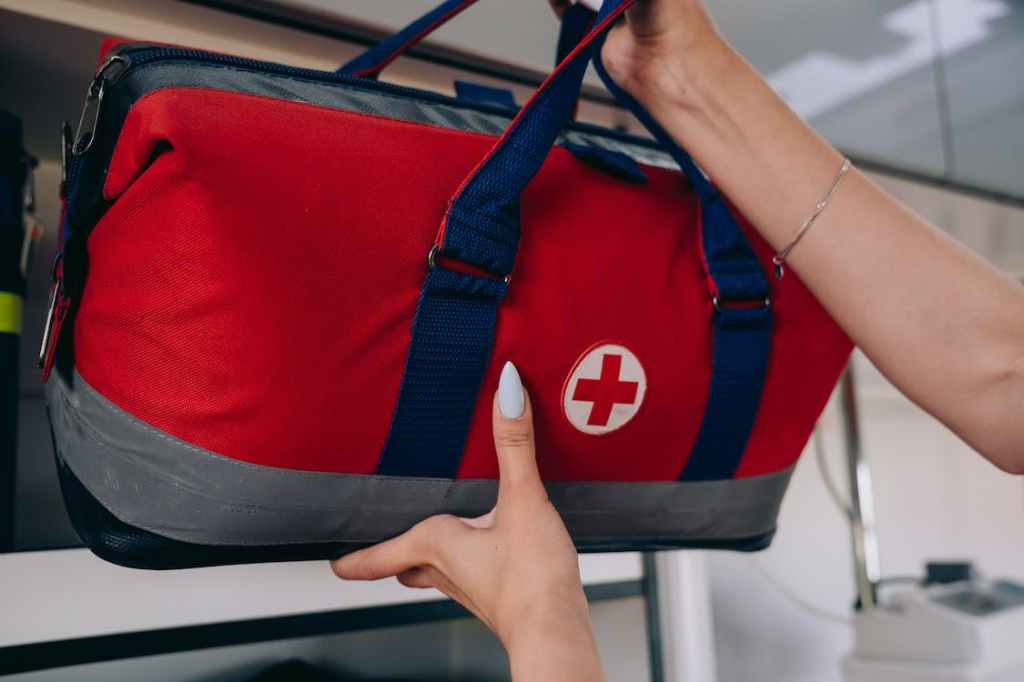The recent scourge of Islamic terrorism is a renewed call for vigilance by all civilized people of the world. Anyone, anywhere, at anytime can be a potential target of these violent means used by ideological extremists of any indoctrinated dogma. However, you can greatly reduce your chances of becoming a victim by taking the appropriate measures to be educated, prepared, and resourceful.
While we’re fortunate to enjoy the right to bear arms in the United States, and this is a critically-important consideration in preparedness, protecting yourself and your family should begin long before any potential engagement with a threat. Truthfully, if you’ve found yourself in a position of having to openly engage a terrorist threat in this manner something has already gone wrong in your planning–which is not necessarily unrealistic given the fluid and dynamic nature of these events.
Prevention of evil is the nexus between everyday serenity and continued survival. This starts and ends with your everyday routines. Crucially important is simple self and situational awareness of your surroundings, and the tangible measures you can take to keep yourself, your family, and your communities safer.

Counter Surveillance
There are six basic areas of surveillance: physical surveillance, electronic surveillance, computer surveillance, social media surveillance, financial surveillance, and biometric surveillance. For the purpose of this article and preventing the most immediate, kinetic threats from the type of ideological extremism we see at a macroscopic scale in our otherwise civilized environments, I’ll focus on physical, social media, computer, and electronic surveillance-counter surveillance.
Counter surveillance, simply put, is watching for those who might be watching you. In the age where there is so much scrutiny of what our own government is doing to monitor our activities, many have become complacent with regards to what foreign threats may be actively surveilling. And in many instances, those threats are still likely using much more rudimentary means to conduct this surveillance. Counter surveillance involves taking measures to prevent others from monitoring your activities, routines, or the vulnerabilities of your community. Taking steps to prevent this or to make it more difficult is in the best interest of safeguarding your personal safety, your privacy, and the security of businesses in your area.
Physical surveillance is the oldest and most basic method of surveillance. In these instances, those who wish to create harm typically observe their intended targets from a distance to record activities and learn patterns of behavior. They might tail a person as they travel from one place to another, or they may remain in a fixed position to record your activities and the surrounding environment.
It’s not uncommon for these individuals to report anonymous crimes in the area that turn out to be false reports or alarms, in order for them to gauge the response times for local police and fire departments. Many agencies release the details of instances of false reports on their social media pages. Make note of these, particularly if you start to see a pattern of them in a concentrated area. Malicious actors almost always look to hit targets where they will have the greatest amount of time to inflict the most amount of damage with the least amount of resistance.

Countering physical surveillance can be very simple: routinely looking over your shoulder, varying your routine and avoiding routes you habitually use (surveillance teams often set up along a route that you most frequently travel, avoid straight routes to your regular destinations, and pay attention at decision points–watch for vehicles scrambling when you take a left where you usually take a right, for example), paying more attention to your surroundings than your phone when out in public, and using that phone to capture photos of people or vehicles that appear suspicious. If malicious actors believe someone has caught onto their surveillance, they are most likely to abandon that potential target. Making eye contact with an unsuspecting, suspicious actor is a great way to make them uncomfortable and throw them off their plan.
The simplest rule I follow when sitting in populated or otherwise vulnerable environments is to ask myself a very basic (but unorthodox, for most) question, “If I were to plan something hostile here, where would be the best places for me to stand or position myself to watch and gather information, and what are the most vulnerable targets?” Then, those are places that I direct my attention for suspicious activity. Putting yourself inside the mindset of those who might try to victimize you is oftentimes the best way to prevent it.
Computer and social media surveillance are related in many ways, but some very basic, common sense practices are to use a screen protector that prevents others from reading over your shoulder, lock your computers and handheld devices when you aren’t using them, install strong firewalls, conduct frequent malware scans, and choose strong passwords that cannot be easily determined by your personal traits or biographical history.

Social media is a great tool for networking and staying up-to-date, but many people share far too much personal information. In many instances, they don’t even realize that what they are sharing could be problematic. In an age with reverse-image search tools, Google Earth, and search engines that index everything we share, those with malicious intent can find almost anyone’s location in a matter of seconds. You could share an image of your hand holding up a sandwich in a McDonald’s parking lot, and in most instances just by the background someone with time on their hands will be able to pinpoint that location. The amount of time is reduced exponentially if you have any location information in your bio. If your profile has any other images that depict your vehicles, the exteriors of homes (yours or just your neighborhood), local highways or road signs, or other businesses, malicious actors don’t even need to necessarily perform much of the physical surveillance previously discussed.
If you’re sharing too much personal information on social media, particularly images, you’ve already done half of the legwork for terrorist actors. Have you publicly shared a picture of the inside of that beautiful church you go to? Maybe at a potluck or communion? All they need to do is a Google search for all of the churches in your city or even state, and then let the computer match up images from the church’s websites or official social media pages with what you shared. Now they know where you worship. That same rule applies to schools, workplaces, and any other extracurriculars. Our collective vanity is one of our greatest vulnerabilities, and unfortunately could be one of our greatest downfalls.
Electronic surveillance mostly involves cameras, listening devices, or GPS tracking devices. Especially when used for malicious intent, these devices are usually placed very covertly which makes them difficult to detect without specialized electronic detection equipment. If you suspect that you may be a victim of this, you should contact your local law enforcement agency for help. This is a criminal breach of your privacy in most instances, with serious consequences if it can be traced. In our public environments cameras are everywhere. This can be a benefit as much as a nuisance. As it pertains to the counter surveillance of malicious actors, it falls within the benefit category. If you suspect something suspicious and you know of cameras in the area that may have caught video or imagery of the activity, be sure to include that information in your report to law enforcement. Do not assume that they know or will investigate to that extent. The more information you provide, the better.
The key to good counter surveillance–and ultimately to preventing yourself from becoming a victim–is learning to be unpredictable. And then, of course–if you see something, say something!

Personal Preparedness
The best any of us can do in a world of truly mostly peaceful people–with an element of very malignant actors–is to be prepared to react efficiently and effectively in the event a terrorist attack does happen.
Being responsibly armed is a key element of preparedness. If you can legally purchase and own a firearm, I urge you to consider doing so. I can author another article specifically about firearms, but I’ll offer these key points for the purpose of this piece: practice before you purchase (many ranges will rent firearms that you can shoot, become comfortable with the firearm you are going to own); seek professional training on safe firearms handling as well as proper marksmanship, and train with your firearm frequently enough that it’s a comfortable extension of you; and finally, fully understand the laws of your state with regards to firearms possession, carrying, and self-defense use.
Having a contingency bag of supplies in your home and vehicle to access if you need to leave in an instant is important. (If you have a family, you should be mindful to have backpacks for the kids, too). These packs do not need to be overwhelming or elaborate, they are not intended for an extended-duration environment and you’re not going to a resort. These are basic items for necessary survival in the instance of a catastrophic event where it might take 24-72 hours for more organized help to reach you or for you to reach that help. Bottles of water and/or a basic filtration device. Simple non-perishable food items that are easy-open, lightweight, and high calorie (your adrenaline is going to be burning a lot of them). A flashlight with extra batteries. Basic first aid supplies. Comfortable shoes, because you might have to walk a ways. Don’t forget to include any necessary prescription medications.
Of course there is so much more you can consider including depending on your climate and tolerance/abilities to carry–these are just a few basics to make sure are included.

Have a communication plan with extended family or friends that is already predetermined. A location or common link that you will all check in with, so that there is a simple accountability measure for loved ones. This avoids confusion and it prevents friends, family, or even first responders from unnecessarily entering into a potentially hazardous area to search for you if you are otherwise safe and accounted for. It is wise to have a secondary location or individual, in the instance of a largescale attack that impacts a broader area or multiple areas. This can be as simple as a text group, but you should be mindful that you may not have cellular signal and/or your cellphone may no longer have any battery remaining so it’s best to include a plan that doesn’t require the use of one. Make sure to write down a list of phone numbers and include it in your pack in the event you cannot access your phone and need to borrow someone else’s to make a call. Memorizing them may not be good enough if you’ve suffered any trauma or you’re otherwise dazed by the “fog of war.”
For some people this is a new era of malevolent, archaic violence. For many of us, however, this is a frustrating and angering dose of déjà vu. In either case, it is both a reminder of the evils that still lurk in this world and an opportunity for us to become better at preventing it from extending its venom into our personal space. Counter surveillance and personal preparedness go a long way toward survival. You are more empowered than you may think when it comes to preventing an attack!
I strive to continuing living my constitutional oath every day, in an objective and honest manner consistent with our founding principles. If you appreciate the time and effort put into the material I offer, you may support me here. Even the smallest donations help me continue to fight for the rights and voices of every American. I am so grateful for your help! Semper Fi!

